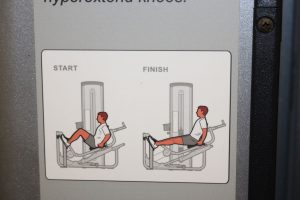Would you believe me if I told you that you didn’t have to spend countless hours in the gym daily to see results? Well, it true. Statistics show that more 80% of people do not get enough physical exercise to meet health guidelines. Why? Time and Inconsistency. However, introducing slow-motion strength training to your lifestyle once or twice or week for at least 20 minutes has been proven to help improve fat loss and improve cardiovascular health.
I’m sure you’re wondering why slow-motion strength training and not aerobics. Slow motion strength training focuses on intense muscle training for a brief period of time to stimulate the best result s from the muscles. Essentially, slow motion strength training focuses on putting as much stress on the muscles as possible following days of rest. The human body needs enough time to recover and grow stronger between weight training, which is why many people fail to see results due to over working their muscles. Sometimes more is not better.
s from the muscles. Essentially, slow motion strength training focuses on putting as much stress on the muscles as possible following days of rest. The human body needs enough time to recover and grow stronger between weight training, which is why many people fail to see results due to over working their muscles. Sometimes more is not better.
Researchers conducted an experiment with untrained men and women who trained two to three times per week for eight to 10 weeks on a 13 exercise Nautilus circuit performing one set of each exercise. Participants exclusively train ed using regular speed repetitions for 8 to 12 repetitions per set at 7 sec each (2 sec lifting, 1 sec pause, 4 sec lowering) or a Super Slow training protocol where they completed 4 to 6 repetitions per set at 14 sec each (10 sec lifting, 4 sec lowering). All of the participants were tested for either the 10 repetition-maximum (RM) weightload (regular-speed) or the 5-RM weightload (slow-speed group).
ed using regular speed repetitions for 8 to 12 repetitions per set at 7 sec each (2 sec lifting, 1 sec pause, 4 sec lowering) or a Super Slow training protocol where they completed 4 to 6 repetitions per set at 14 sec each (10 sec lifting, 4 sec lowering). All of the participants were tested for either the 10 repetition-maximum (RM) weightload (regular-speed) or the 5-RM weightload (slow-speed group).
The results indicated that slow-motion strength training caused about 50% greater increase in strength for both men and women than regular speed training. Hence, if you do slow motion strength training, maintain and healthy diet, and drink a substantial amount of water, research shows you will see results.
Westcott, W. L., Winett, R. A., Anderson, E. S., & Wojcik, J. R. (2001). Effects of regular and slow speed resistance training on muscle strength. Journal of sports medicine and physical fitness, 41(2), 154.

